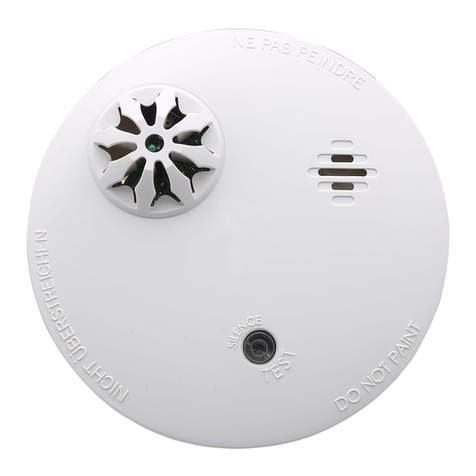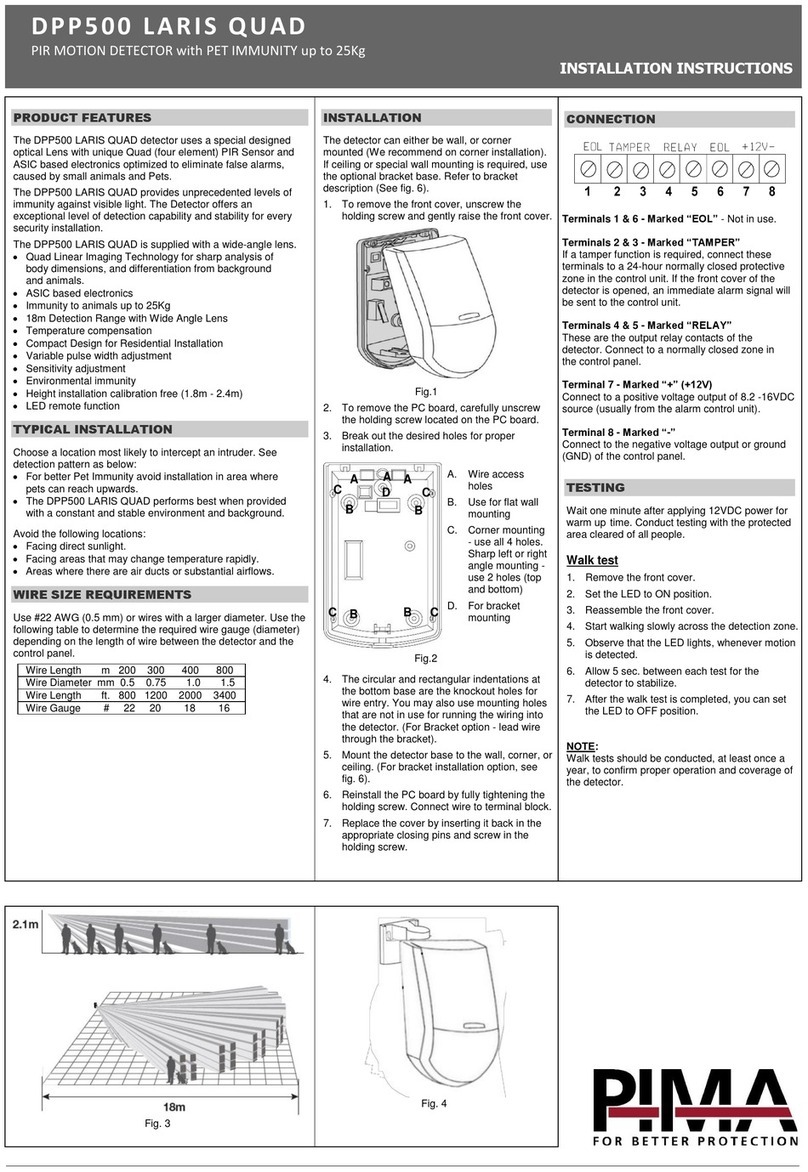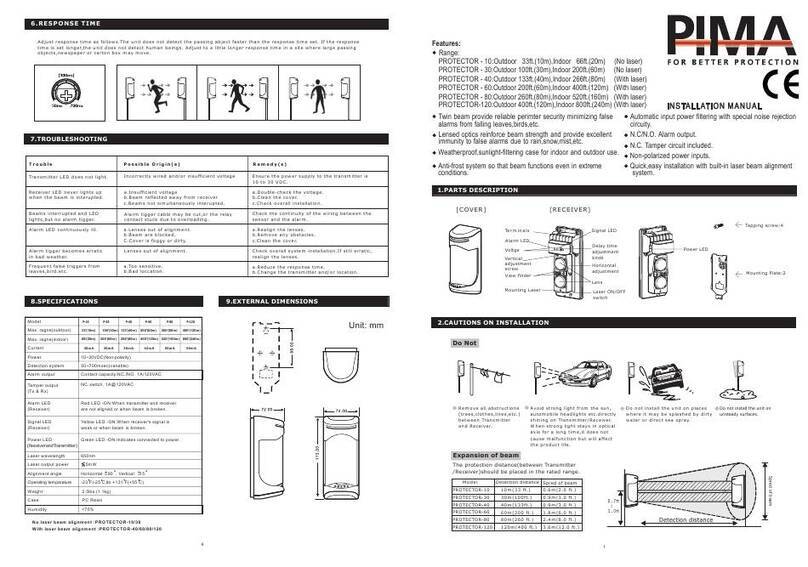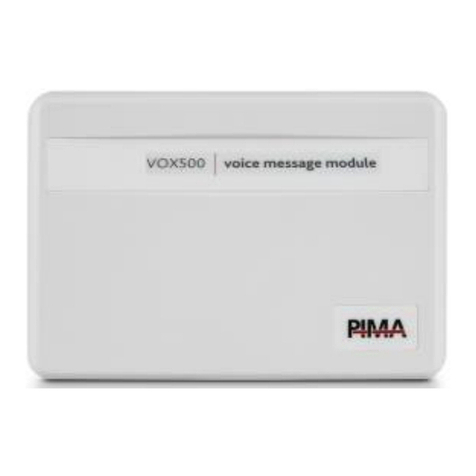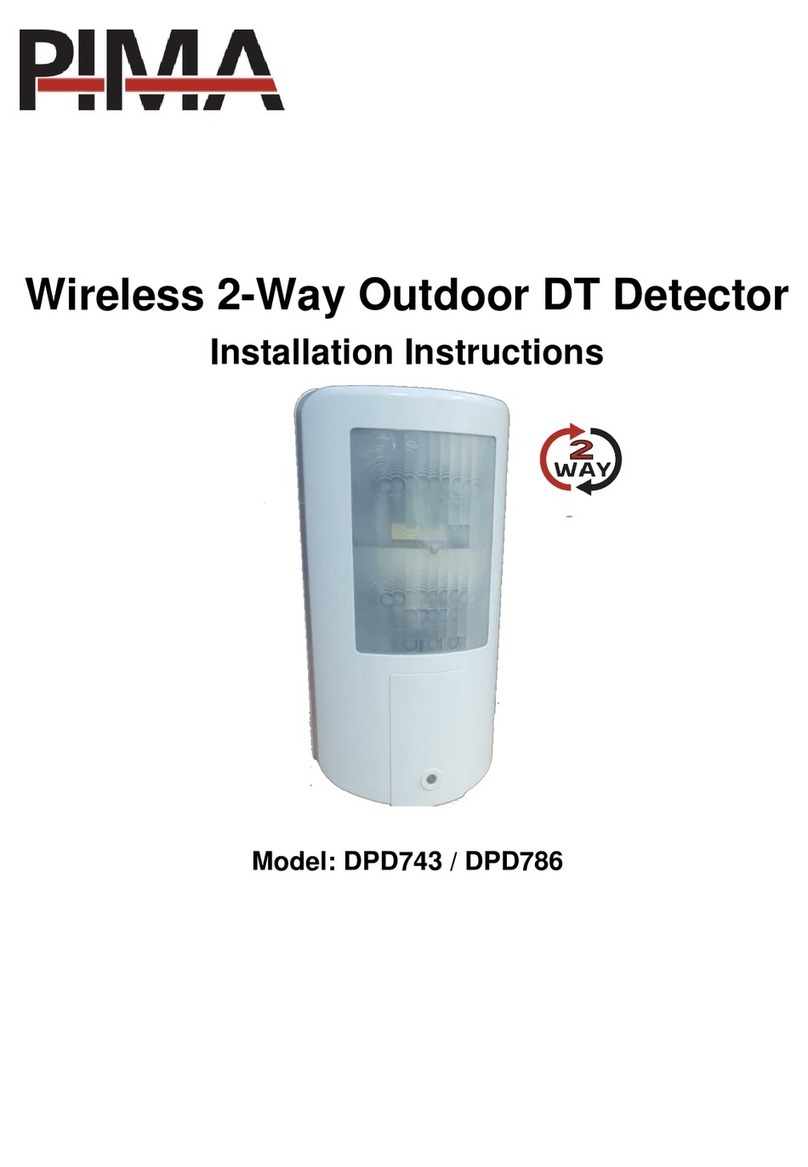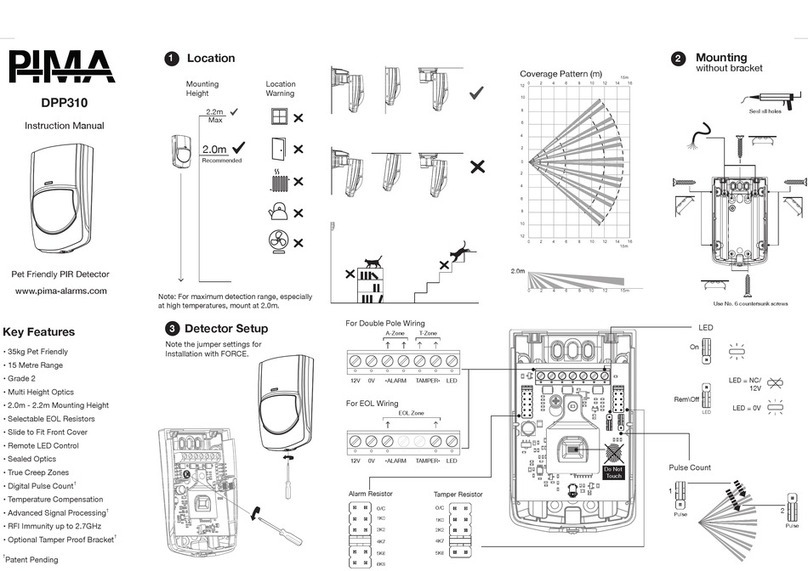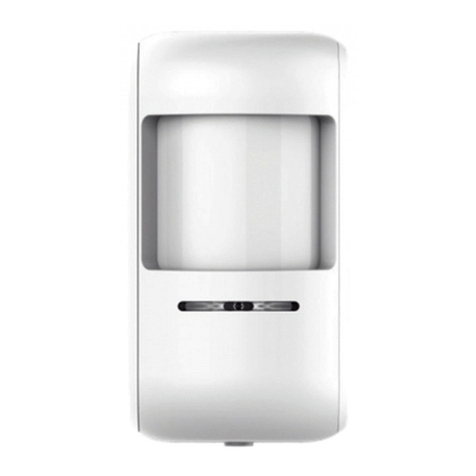
4. To enroll the Contact detector set Dipswitch 3 to ON and press both
tamper buttons for at least 3 seconds; verify the serial number
appears on the keypad display and press on Enroll.
5. Exit the enrollment menu.
Manual Enrolling:
1. Enter Installer menu, and select: System Configuration > Peripherals
> Wireless Peripherals > Enroll and delete > Detectors >Enroll >Manual
Enrollment
2. Enter the serial number and press .
3. Select Enroll and press .
Enrolling using the Force Manager Software:
For information about enrolling the DCM using the Force Manager
software, refer to the Force Manager Manual.
Verify that the receiver has identified each of the detectors by
generating a tamper signal (by momentarily closing and opening both
tampers). The tamper message will be sent twice, once for each
detector.
NOTE: If for any reason it is necessary to re-enroll, press both
tamper buttons (back and cover) for at least 3 seconds.
INSTALLATION INSTRUCTIONS
Considerations for wireless communication
1. For best wireless communication, place the unit at the highest
possible position.
2. Temporarily attach the unit to this point using two-sided adhesive
tape.
3. Generate an Alarm or Tamper signal and verify that the receiver
has received the signal. If the signal is not detected, reposition the
transmitter and try again.
Considerations for shock detection
1. Select the intended position for installation, ensuring the surface is clean and clear of
any irregularities. Refer to Table 1 for details about detection ranges for the different
surface types.
2. Set the detector’s sensitivity as follows, using the sensitivity trimmer:
i. With the unit set for normal operation, use a suitable instrument to bang or tap the
protected area.
ii. If the sensitivity needs adjustment, use a screwdriver to adjust the trimmer (turn
the trimmer control clockwise to increase sensitivity or counterclockwise to reduce
sensitivity).
iii. Repeat steps i and ii until the desired sensitivity level is achieved. If required, you
can set Dipswitch 2 to OFF to reduce sensitivity range.
3. Close the front cover.
Table 1: Typical Detection Range
The above values are typical and are subject to practical testing, which must be
performed for each installation. In some environments, these values may differ from the
values listed above.
Considerations for magnet installation
1. Install the DSK in a place that enables you to install the magnet in parallel to it (for
example: door frame).
2. Install the magnet on the right side of the DSK as indicated in
Figure 6.
NOTES:
• Maximum distance of the magnet from the detector is 20mm (0.7inch).
• Position the magnet as close as possible to the same plane level as
the back surface of the DSK.
• The mark on the magnet's plastic case should be opposite to the mark
on the detector's case.
• Placing the magnet on the wrong side of the DSK will cause a tamper
alarm signal.
FINAL MOUNTING
Separate the back part of the transmitter (Fig. 4) and mount all the parts
in place (Fig. 5).
SPECIFICATIONS
Supervision
Transmission:
868.65MHz model: every 15 minutes
433.92MHz model: every 65 minutes
81 x 35 x 32 mm (3.2 x 1.37 x 1.27 in.)
0°C to 55°C (32°F to 131°F)
-20°C to 60°C (-4°F to 140°F)
Specifications are subject to change without prior notice.
Should any questions arise please contact your supplier.
ORDERING INFORMATION
Contacting PIMA
PIMA Electronic Systems Ltd.
www.pima-alarms.com
5, Hatzoref Street, Holon 5885633, Israel
Tel: +972.3.6506414
Fax: +972.3.5500442
© PIMA 05/2022 4412995-A
5IN2995-A
Scan for technical documentation
Limited Warranty
PIMA Electronic Systems Ltd. does not represent that its
product may not be compromised and/or circumvented, or that
the Product will prevent any death, personal and/or bodily
injury and/or damage to property resulting from burglary,
robbery, fire or otherwise, or that the Product will in all cases
provide adequate warning or protection. The User understands
that a properly installed and maintained equipment may only
reduce the risk of events such as burglary, robbery, and fire
without warning, but it is not insurance or a guarantee that
such will not occur or that there will be no death, personal
damage and/or damage to property as a result.
Read this guide in its entirety before attempting to program or
operate your system. Should you misunderstand any part of this
guide, please contact the supplier or installer of this system.
Copyright © 2020 PIMA Electronic Systems Ltd. All rights
reserved. E&OE
WARNING: This product should be tested at least once a week
UKCA and CE RED Compliance Statement
Hereby, PIMA declares that this equipment is in compliance
with the essential requirements of the UKCA Radio Equipment
Regulations 2017 and CE Directive 2014/53/EU.
For the UKCA and CE Declaration of Conformity please refer to
our website: www.pima-alarms.com







